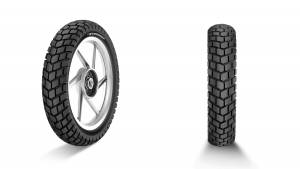2012 Mitsubishi Pajero Sport first drive
Goes without saying that Toyota caught everybody napping when they launched the Fortuner, none more so than HM-Mitusbishi. Not that the Fortuner came out of the blue; it was hardly a secret that the SUV was India bound, that it took so long was what raised an eyebrow. And the other eyebrow joined it when pricing was revealed; at Rs 19lakh it immediately put every other SUV in that segment out of business and, as was to be expected, Toyota found a million buyers. So many in fact that those who have bookings are looking at 6-8 months for delivery .
That was probably the final wake-up call HM-Mitsubishi needed to stir it from its slumber. Here was a company sitting on a 24-carat heritage but for years soldiered on with mostly dated products both in the passenger car and SUV segment, stubbornly refusing to either innovate or excite. And sales numbers accurately reflected the Indian customer's abhorrence to anything old. But things are moving along. Token gestures are being made to link the Cedia to its rallying heritage (this is the car which dominates Indian Rallying, but how many know that?).
And it starts with the same ingredients as the Fortuner. The Pajero Sport you see here isn't even remotely related to the Pajero or the Montero that's sold in India. Instead it's based on the Triton pick-up truck platform (the Hilux pick-up platform underpins the Fortuner) and is designed and built for the same (emerging) markets as the Fortuner South East Asia, South America, Latin America, South Africa and Russia (where it was launched, at the Moscow Auto Show, four years ago). It is not even built in Japan, Thailand is the Triton/Pajero Sport's mother plant and that's where we joined a bunch of Pajero owners on an off-road course designed to demonstrate just how capable the SUV is.
But before we start off I get an opportunity to do a walk around the car and have to say this is a good looking SUV. One of the reasons for the Triton pick-up's popularity is because it cuts a very distinctive figure and the front end of the Pajero Sport is similarly good looking; it has Mitsubishi's old family grille (seen on the old Outlander, not the new Evo-esque nose) flanked by a set of attractive clear-lens headlamps with projector beams. At the rear it sports a pair of slinky Alfa Romeo-esque tail lamps. In keeping with the traditional SUV formula there are strong haunches and the wheel arches are properly pumped up housing chunky 16-inch wheels but thanks to the ladder-frame chassis it has a high riding suspension set-up and the gap between the rear wheel arches and the tyres is gapingly wide. The Pajero Sport doesn't lack road presence and it can actually be termed handsome; even aggressive in this sinister shade of black.
Being based on a rugged pick-up truck-derived ladder frame chassis gives the Pajero Sport a rugged go-anywhere ability and you don't even blink when faced with challenging terrain or even slamming it into a few potholes. It runs a double wishbone set-up at the front with coil springs and a stabilizer bar while at the rear the Triton's leaf springs have been ditched in favour of a more ride-quality-friendly three-link set-up with coil springs and stabiliser bar. And if the move away from leaf springs had a detrimental impact on off-road ability, well, I couldn't tell.
As you can see from the pictures the Pajero Sport is very much in keeping with Mitsubishi's exalted off-road heritage. If you remember, a couple of years back we took the Fortuner and its rivals on an off-roading expedition to Chikmagalaur and while we found the Toyota to be superior in every department, the one area where the venerable Pajero still scored was off-road. While we didn't have similar levels of slush, on this purpose-built off-road course laid out at the Ruanpare fishing park outside Bangkok, the Pajero Sport felt every bit as capable as its namesake, tackling steep inclines, heart-stopping declines and foot-deep chassis-twisting ruts without so much as working up a sweat.
Unlike the Fortuner, the Pajero Sport doesn't have full time four-wheel-drive, it uses the Super Select 4WD system similar to that on the Indian Pajero which allows shifting between rear-wheel-drive and four-wheel-drive at speeds of up to 100kmph. The centre differential can also be locked while on the move (not recommended for highway cruising) which makes all wheels turn at same speed thereby sending torque to the wheels with most traction and is particularly effective on loose surfaces. Shifting into 4x4 low doubles the torque going to both axles thereby giving terrific grunt to crawl up steep slopes but it requires stopping the vehicle, shifting to neutral and then wrestling the short stubby 4x4 lever all the way forward. It is an old school affair, a generation behind the fully electronic Super Select 4WD II system on the third-generation Pajero and Montero, but a lot of the charm of a genuine 4x4 SUV are these rugged man-toys that need a bit of muscle; flicking a switch is a lot easier but where's the drama in that?
Hardcore 4x4 nuts can also get an optional locking rear differential that provides more traction than the limited slip rear differential. Our Pajero Sport didn't have that option but with the generous 215mm ground clearance and excellent axle articulation she found traction and could keep going even with one wheel hoisted in the air and the other scrabbling on some loose sandy patches.
The Pajero Sport we drove had the 4M41 3.2-lire DI-D four-cylinder common-rail diesel engine that develops 165PS of power and 351Nm of torque. It's the same unit as the Montero in India and refinement is only average; even with the windows up you do feel some of the vibrations and brisk motoring allows a fair amount of engine noise and boom to creep into the cabin. Performance is decent, 100kmph comes up in approximately 14.5 seconds but this is blunted by the automatic transmission that has only four speeds and despite a sport mode it isn't very quick to react. What the engine has is good bottom end grunt which makes it relatively unstressed and negates the need to work the 'box hard.
The ladder frame chassis gives the Pajero Sport decidedly old school driving dynamics. The suspension is soft, under cornering there is a fair bit of body roll and understeer is ever present. Steering feel is almost non-existent and she does get upset by road imperfections but that's no different from how the Fortuner behaves. None of the SUVs in this segment like to be hustled and the Pajero Sport doesn't break any new ground in its handling behaviour. Ride quality is plush and compliant and allied to the comfortable seats will make mile munching very comfortable. She also has good brakes (406mm discs at the front and 295mm drums at the rear); I did try some repeated heavy braking and found no signs of rapid brake fade.
In Thailand the Pajero Sport can also be had with the 4D56 2.5-litre four-cylinder common-rail diesel (not to be confused with the current Pajero's 4M4O 2.8-litre IDI diesel) and HM-Mitsubishi are mulling over getting this powerplant to India in an effort to keep costs in check. However this unit develops only 140PS of power. And in Thailand the 2.5 doesn't get 4WD and that will be a problem a Mitsubishi without four-wheel-drive will simply not wash with customers. It could be a mistake to get this engine to India particularly since the rest of the SUV is just so promising.
And the promise extends to the interiors that are a clear generation, even two, ahead of the current Indian Pajero. Those familiar with the inside of the Outlander will be at home in the Pajero Sport; the layout and design of the dash is similar and a lot of the parts including the steering wheel with integrated controls for both the stereo and cruise control are shared with the Outlander. It's fully loaded too with ABS, twin front airbags, electric seats, leather, rear air-con and a touch screen navigation interface which might not be de-specced for India (remember the limited edition Cedia was the first Indian vehicle with in-built navigation). There is no integrated stereo and the Alpine head unit on the SUV we drove looked out of place but, like the Outlander, Indian vehicles should get a kicking Rockford Fosgate system with a subwoofer in the boot.
The black and beige two-tone colour scheme together with beige leather upholstery looks excellent and everything including the quality of plastics is high quality. It's a cabin that looks and feels premium, befitting its expected Rs 20 lak
h price tag. The cabin is also as spacious as the Fortuner's with the driver and passenger well catered for. It has three rows of seats though, like all SUVs in this segment, the third row is fit only for children.
In the final analysis everything depends on pricing and HM-Mitsubishi simply cannot afford to price the Pajero Sport at a premium to the Fortuner, especially now with the cheaper 2WD Fortuner available in the market. Expected to be launched here in March this year, the Pajero Sport will initially be imported from Thailand with assembly operations to commence early next year.
Starts Rs 24.98 Lakhs
2477cc
Manual
178
400
12.8 Kmpl
Related Stories
Top Stories
Latest Videos
Most Popular
Network18 Updates














